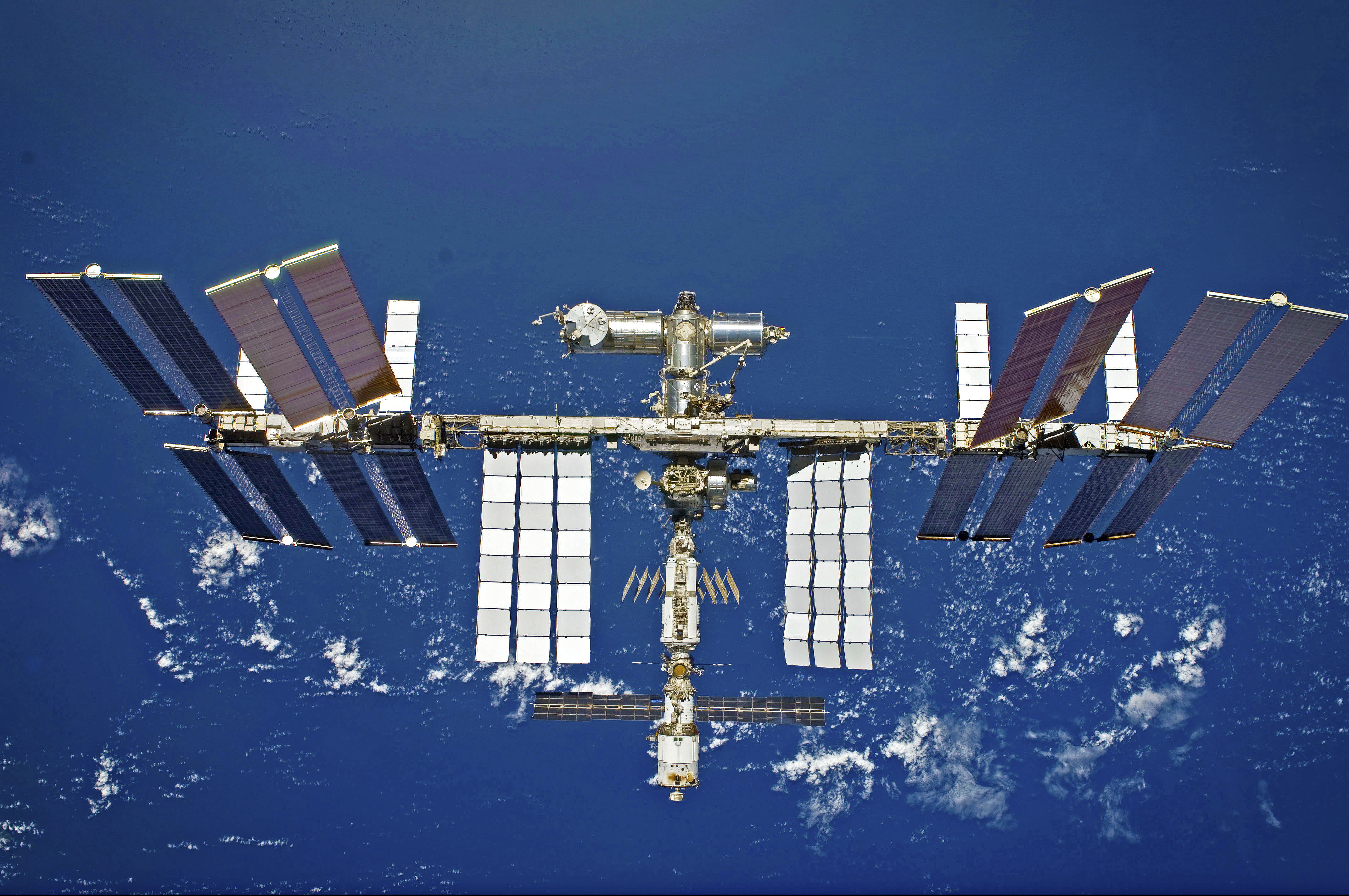We celebrated the 20th anniversary of continuous human presence in the International Space Station last November, and in April we celebrated 20 years since the first European astronaut entered the Space Station, ESA astronaut Umberto Guidoni.
When searching the ESA archives on the arrival of the first European in humankind’s outpost in space, we came across this image taken from Italy at the time:
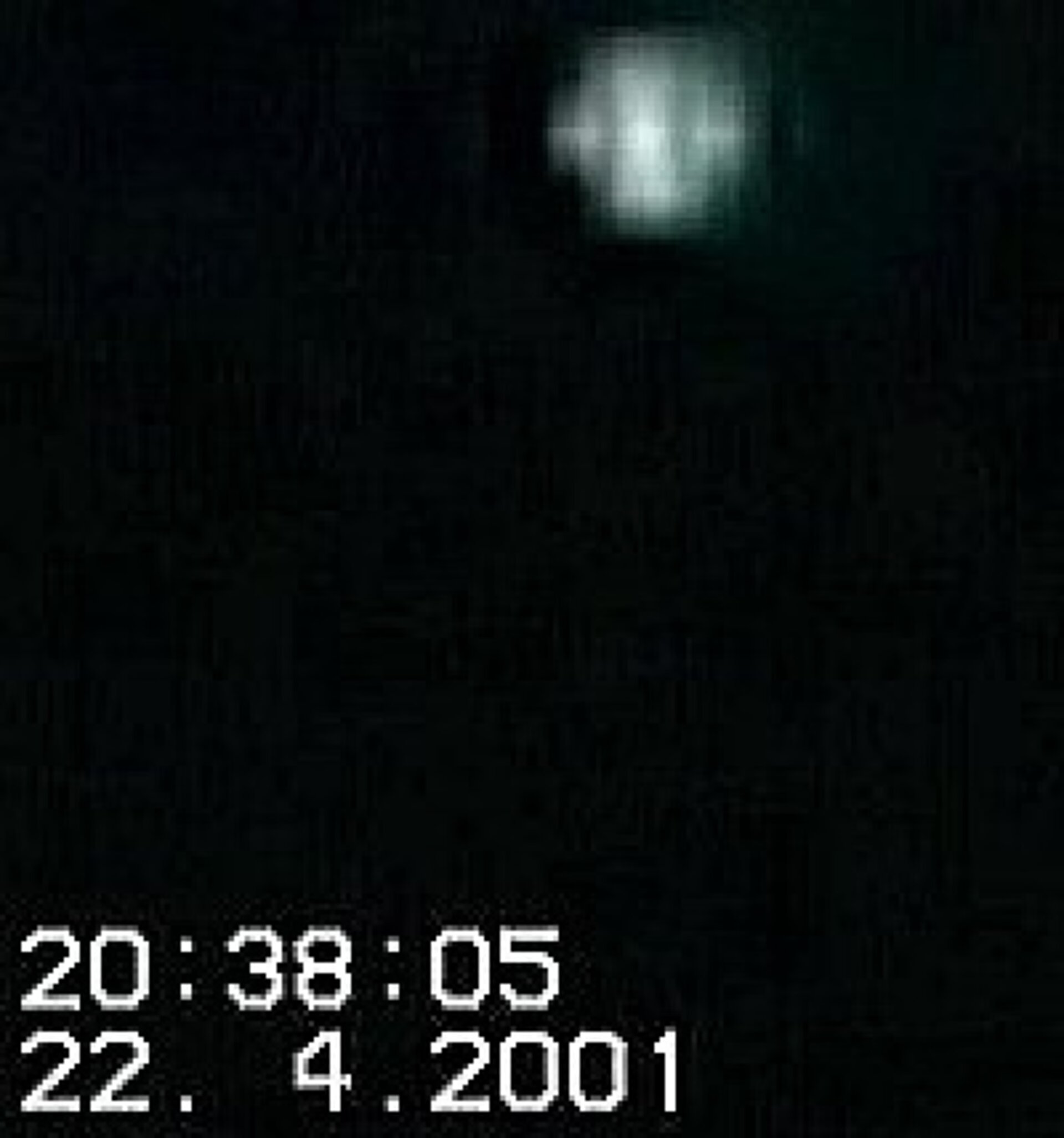
‘Guidoni’s in there!’
In the 20 years since this image was taken from Earth, photography of the Space Station circling our planet at 400 km altitude has taken great strides. We invited amateur photographer and space enthusiast extraordinaire Szabolcs Nagy to write a guest blog entry about it (who, amazingly, takes all his pictures of the Space Station from his backyard in London, UK!). Check out his own blog, spacestationguys.com for more.
On with Szabolcs’ words:
Most of us might not even know that the Space Station can easily be observed by naked eye if we know where and when to look. It is one of the most staggering things to look at it quietly crossing the sky. In the past 20 years there were always a minimum of two brave humans on the Station. I always make sure I wave at them!
For a photographer like myself the question almost immediately comes to mind – can I photograph it?
Luckily yes! The amateur astronomer community first started experimenting with how to snap a shot of the Space Station. By the time I arrived at the ‘scene’, many talented photographers had already taken amazing photos. I created the Space Station Guys website to create a worldwide hub for amateur Space Station photos, not only for mine but for anyone’s.
In the early days most of them used film cameras, but soon the digital age started and it all became somewhat easier. Camcorders, CCTV and even modified webcams took over – it might sound funny in 2021, but back then these were the only options for good quality digital photography. This article will feature staggering amateur photos and animations of the International Space Station and related missions from the past 20 years (all photos below are from Space Station Guys website). Some of these early photos show the Space Station with only one pair of solar arrays, some with a Space Shuttle on approach or docked to it.
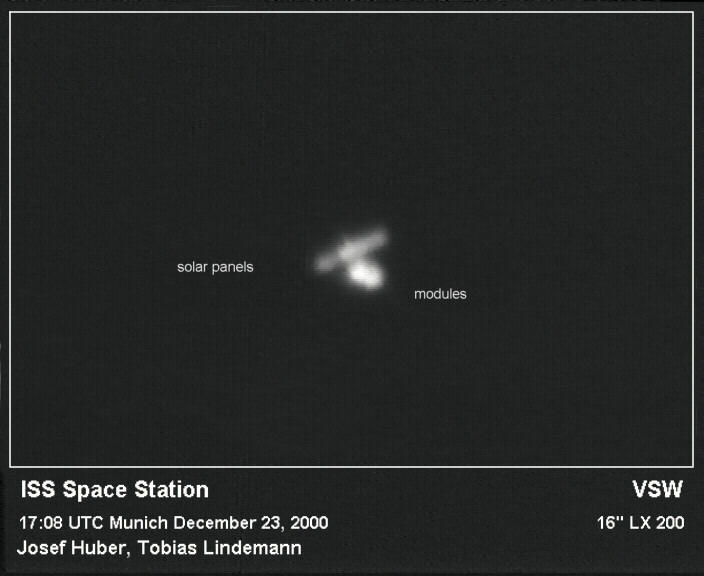
Early photo of the newly born ISS – Credit: Josef Huber, Tobias Lindemann
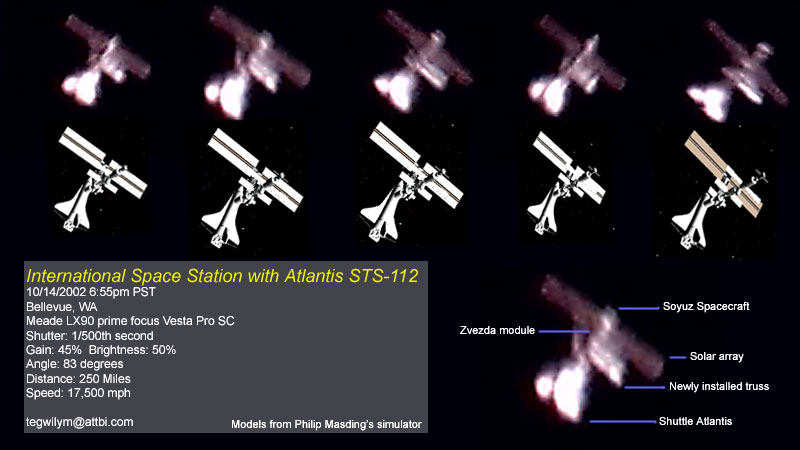
Early Space Station and Space Shuttle Atlantis – Credit: Tom Gwilym
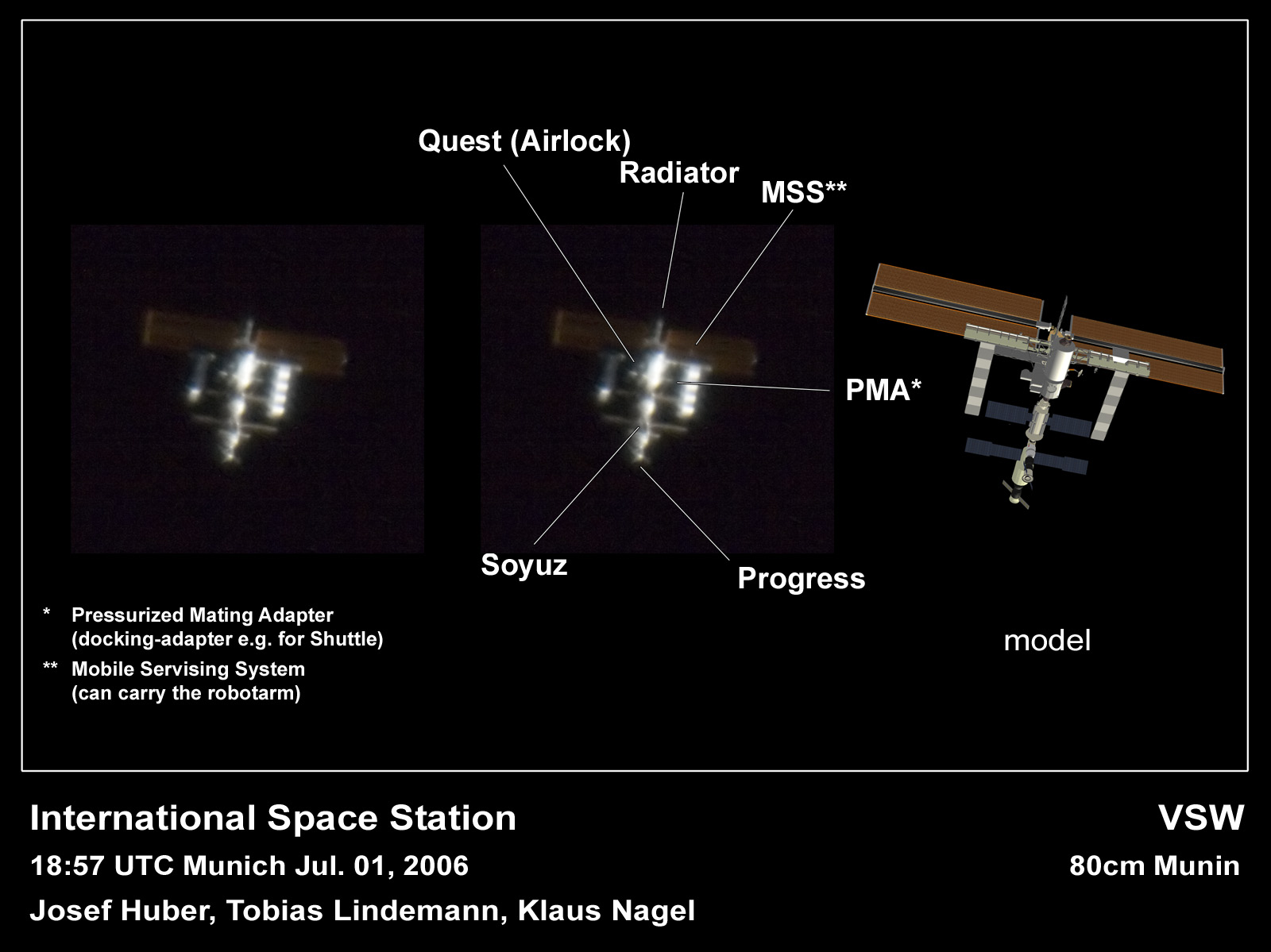
Space Station with only one pair of Solar Arrays – Credit: Josef Huber, Tobias Lindemann, Klaus Nagel
There are a few ways to accomplish your own photo. One of them is the manually tracked methods, which do not necessarily require motorised mounts or very expensive equipment. I could divide manual imaging into three categories. Remember this is the easiest and cheapest way to catch a shot of the International Space Station!
Manual tracking
The first method only requires a digital camera and a wide angle lens. Long exposure shots are taken during an ISS flyby, usually between 20-30 seconds each. This will show the Space Station as a bright long trail in our photo. This method is perfect for making compositions with amazing foregrounds. The Space Station is very bright in the night sky, even being in a light-polluted city can’t stop you from capturing it!
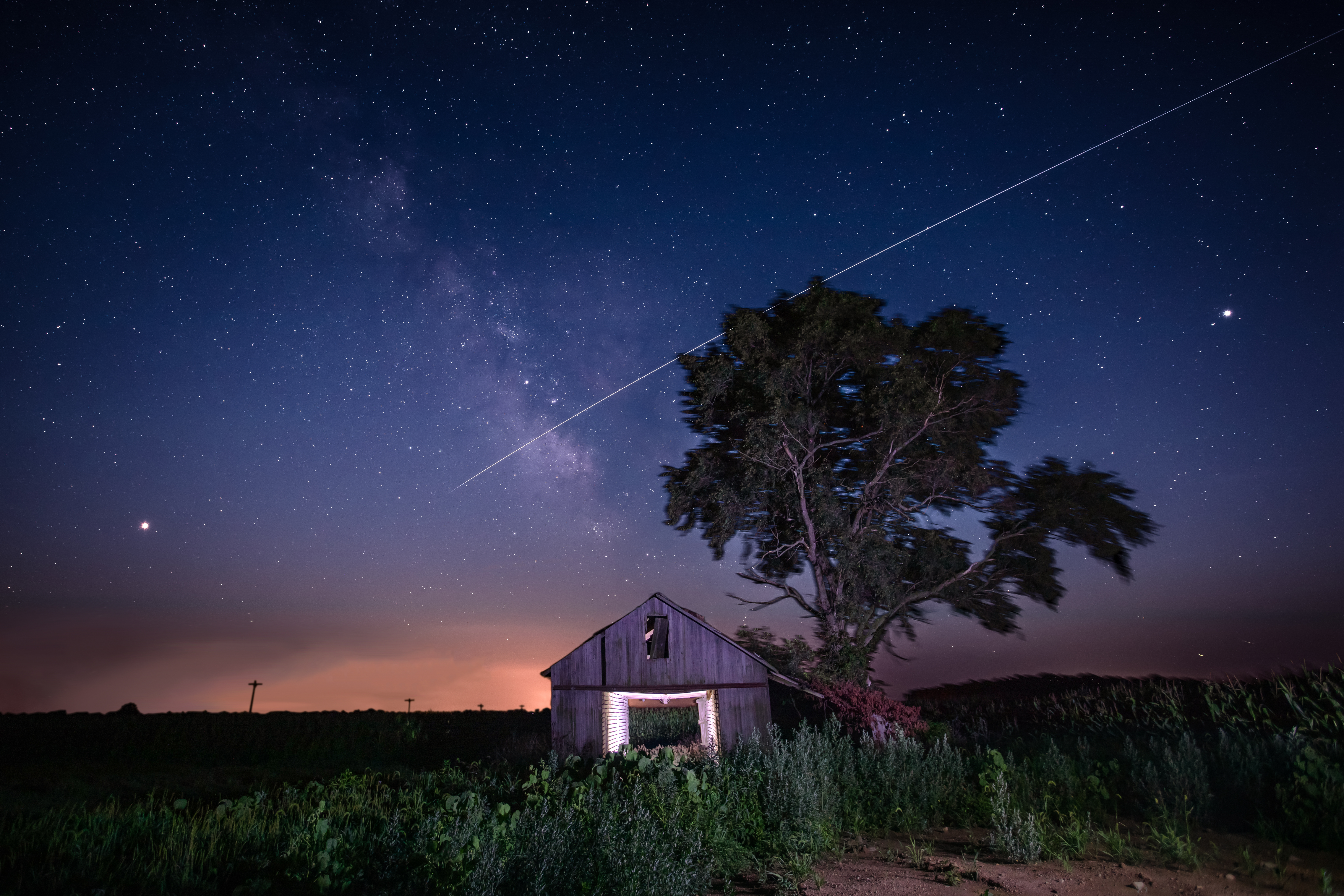
Beautiful long exposure photo – Credit: Tom Jones
The second method requires a telescope and a digital camera. This is the method used for most of the shots taken during construction of the ISS (2000-2010). I have seen so many amazing photos of the unfinished Space Station. I personally missed the Space Shuttle era, but many photos keep the memory of those very important years alive.
During this method we manually track the Space Station, which means we use both our hands and physically move a telescope to follow the Space Station in the sky. Our finder scope and the main telescope needs to be accurately aligned, so whatever object we are pointing at with the finder scope, the same object will be visible on our camera screen too. People usually took a series of still photos during a Space Station flyby, but as digital cameras improved, it became possible to capture videos an average frame rate of 20-25 fps.
The third method is the most recent one, it still requires a telescope, but instead of a digital camera we use so-called high frame rate planetary camera. The manual tracking method is exactly the same, but this way we gather between 50-200 frames per second – a whole lot of photos!
This allows us to maximise the success rate and if we are doing it right, even a cool animation can be put together, like the ones below.
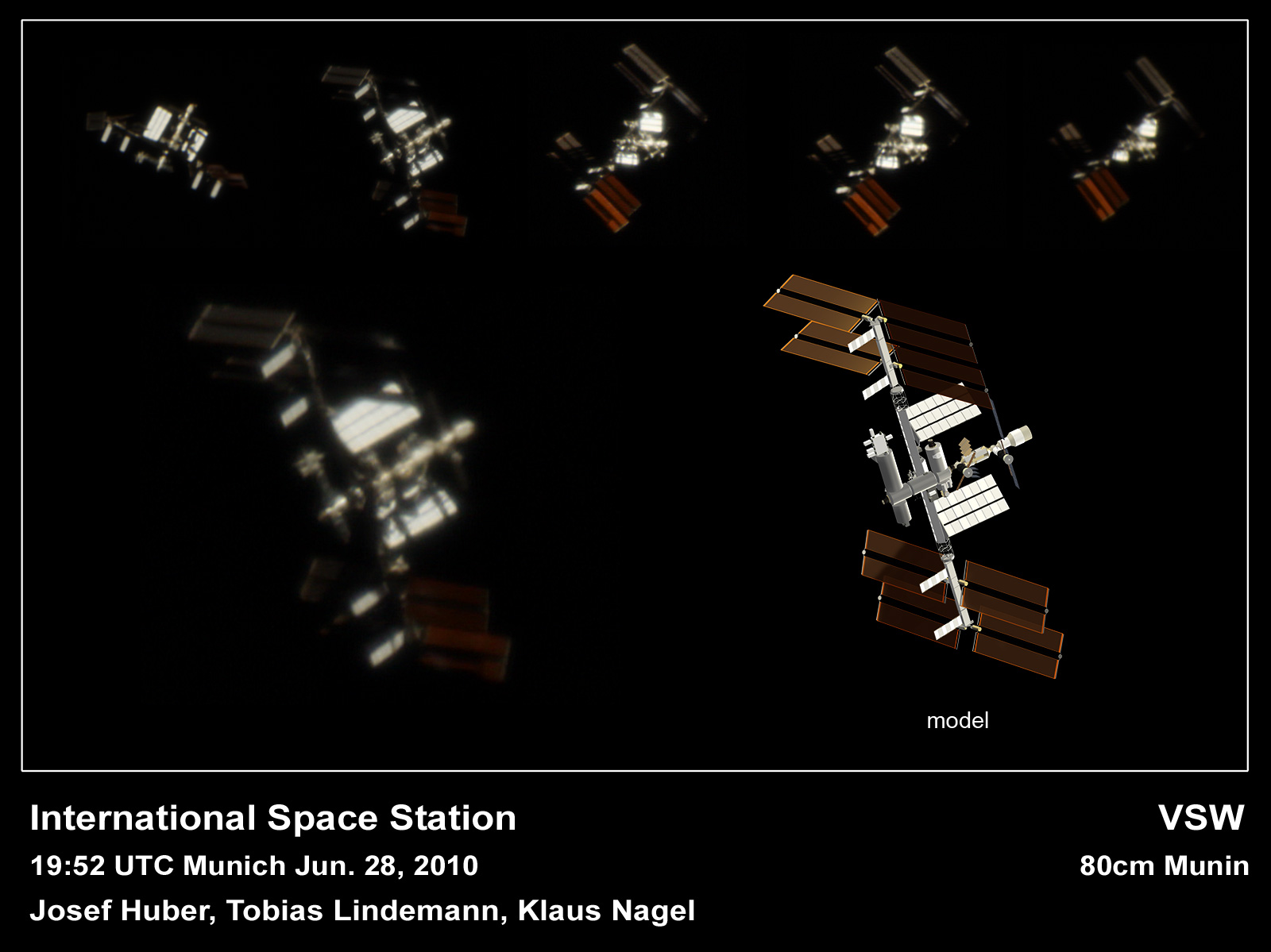
Finished ISS – Credit: Josef Huber, Tobias Lindemann, Klaus Nagel
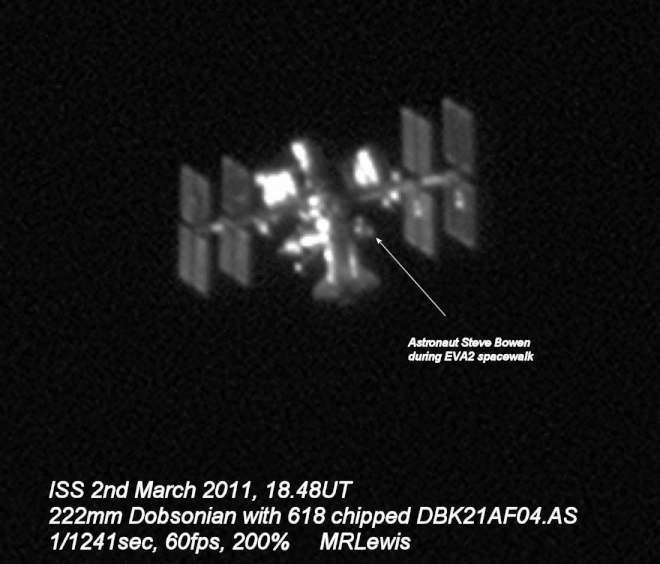
ISS with Space Shuttle Discovery – Credit: Martin Lewis
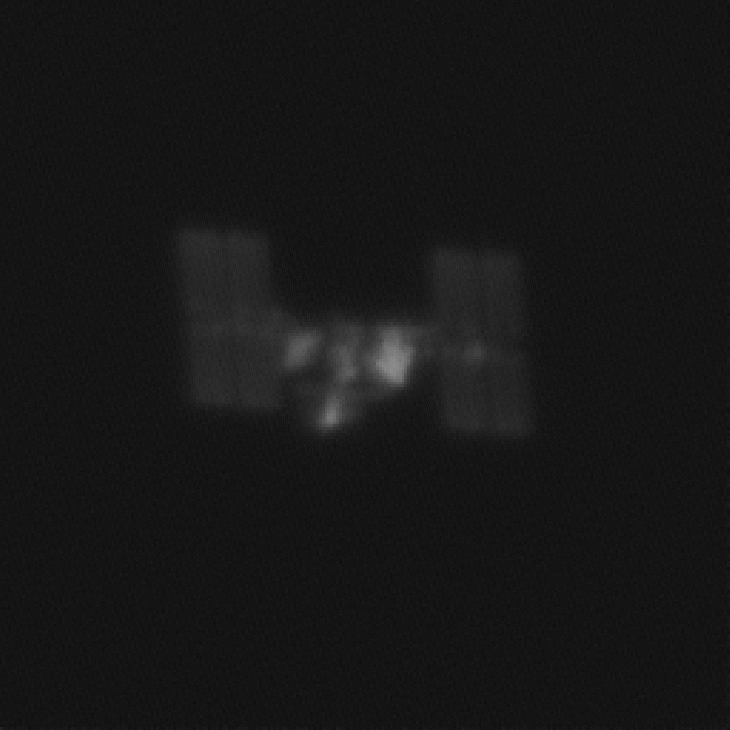
ISS with ESA’s ATV cargo spacecraft – Credit: Philip Smith
Transits
Also let’s not forget the Space Station transits! This is when the Station appears in front of the Moon, Sun or a planet at a given time from a certain location. If you know where and what time to be, you can witness it and more importantly capture these very special moments.

Lunar transit (unilluminated) – Credit: Andrew McCarthy

Lunar transit (illuminated) – Credit: Simon Tang
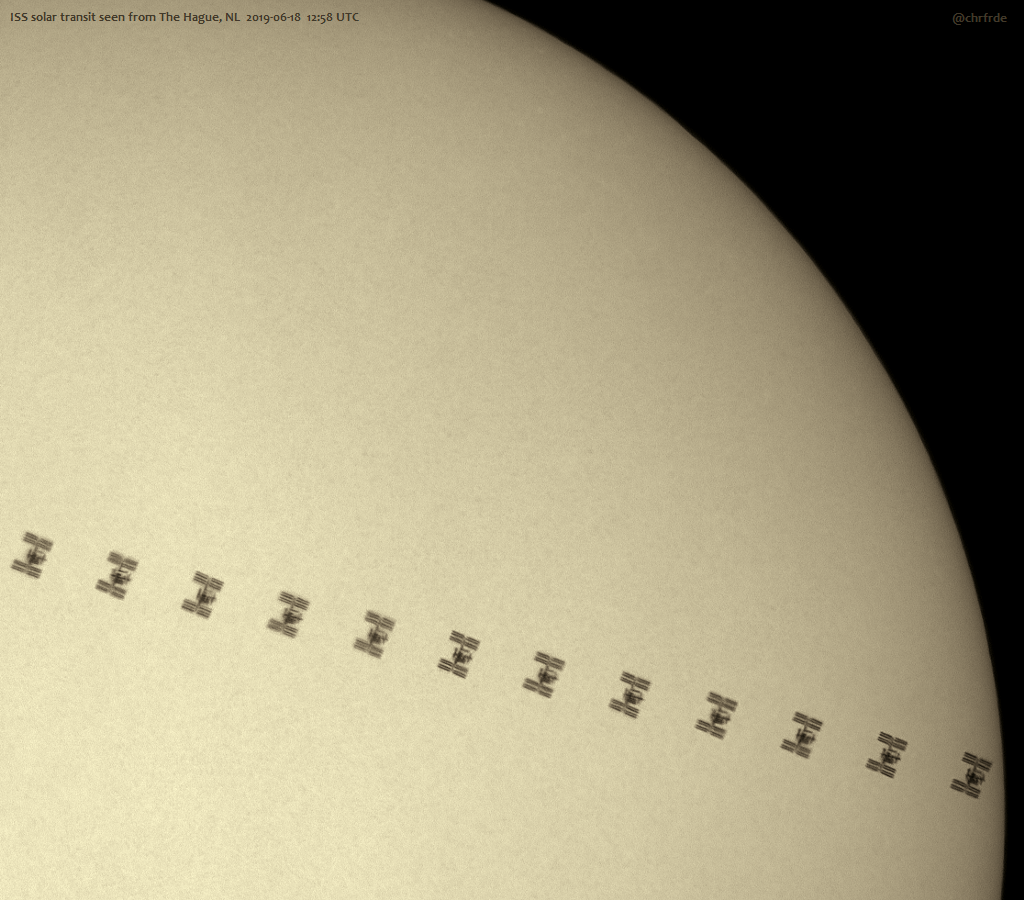
Solar transit – Credit: Christian Fröschlin
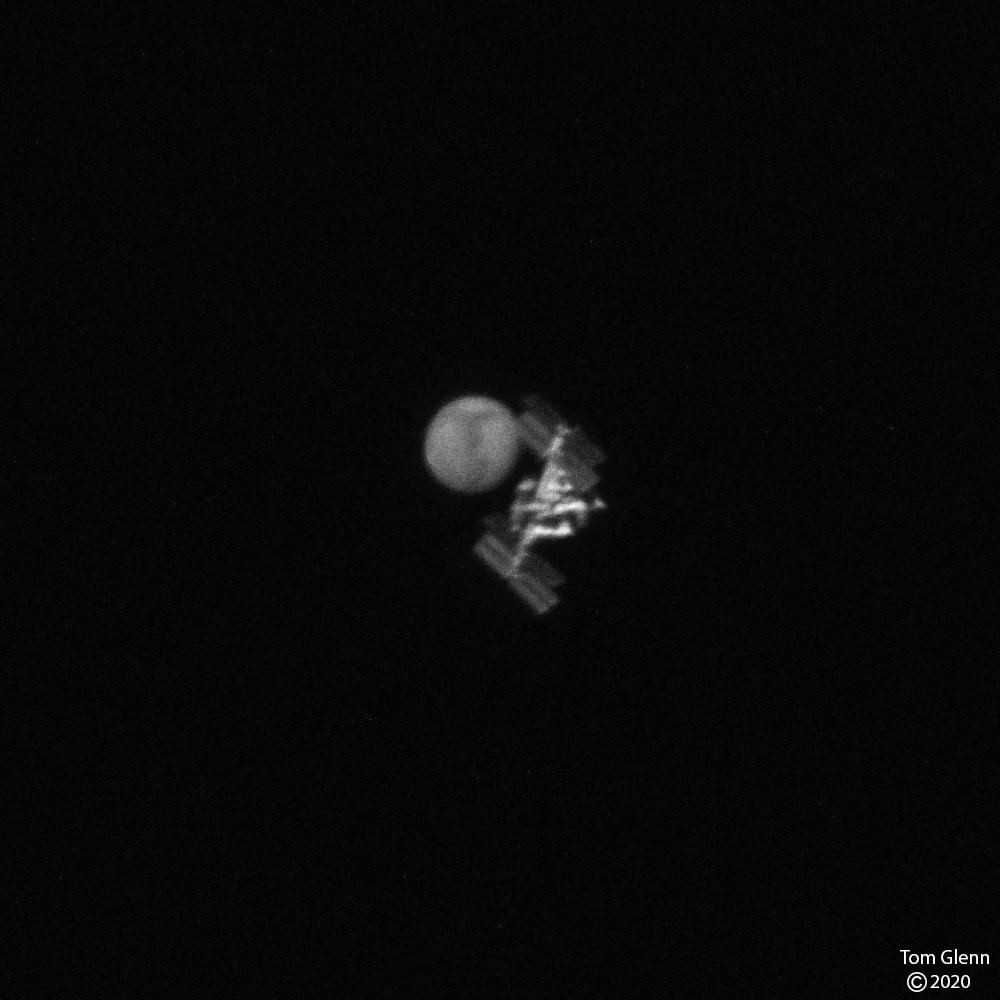
Mars transit – Credit: Tom Glenn
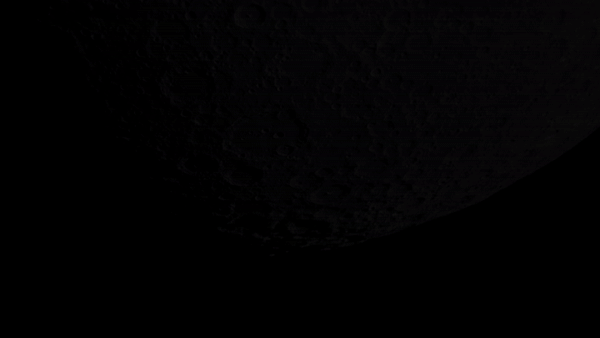
ISS lunar transit (illuminated) – Credit: Szabolcs Nagy
Motorised tracking
Motorised tracking uses a high-precision mount to do most of the tracking for us. It is a very cool way to photograph the Space Station, larger scopes can be used and the results are clearly staggering. The downside is the financials, a capable mount and a large telescope can cost a leg and an arm.
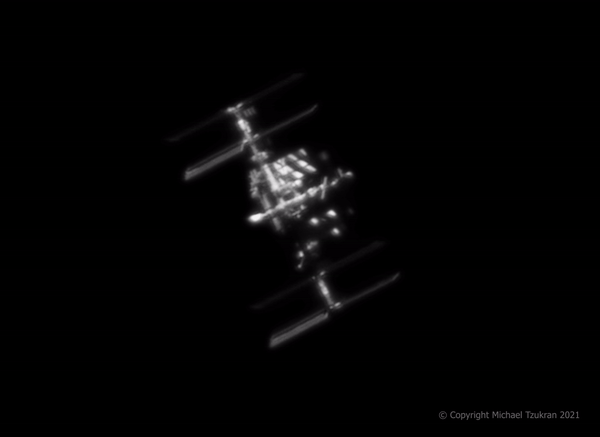
Almost unbelievable details of the Space Station– Credit: Michael Tzukran
Michael Tzukran, one of the prominent figures in this field describes the method:
“My equipment is an equatorial mount with a computer. I can send to the computer mount files that have in them all the information about the position of the satellites. And then when the time is right, I’m sending a command to the mount to track the satellite when it rises above horizon.”
ESA astronaut Thomas Pesquet and NASA astronaut Shane Kimbrough made three spacewalks last month to install new solar panels… and the new additions have already been imaged from Earth. This amazing animation shows the new arrays on the right placed in front of the current ones:
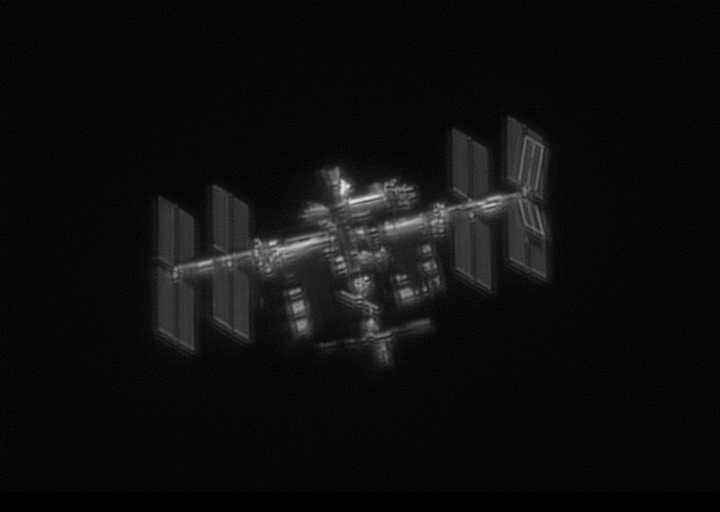
Credits: Maksim Khisamutdinov, Ph.D., Senior Researcher
Why?
But enough of the technicalities. Why is it so cool to take a photo of the Space Station?
Well first of all this is for people who love challenges. The Station travels at a speed of 27000 km/h approximately 400 km above the surface of Earth. This is FAST and it means the outpost goes around Earth 16 times everyday, so the astronauts and cosmonauts see the Sun rising and setting 16 times a day!
Tracking the station is by far the most difficult challenge in the task, but when someone masters the technique of imaging and image processing, quite staggering details can be captured on the station.
Last but not least maybe the coolest aspect of this hobby is to capture historic events. I had the opportunity to photograph some really unique moments such as the first arrival of a SpaceX Crew Dragon spacecraft to the Space Station. Or capturing the Soyuz MS-13 spacecraft with three humans on board approaching the station. Or a lunar transit which I captured on my birthday – retweeted by former Space Station commander Chris Hadfield. I also managed to photograph all the cargo spacecraft which are delivering the Space Station with vital and precious cargo supply on a regular basis.
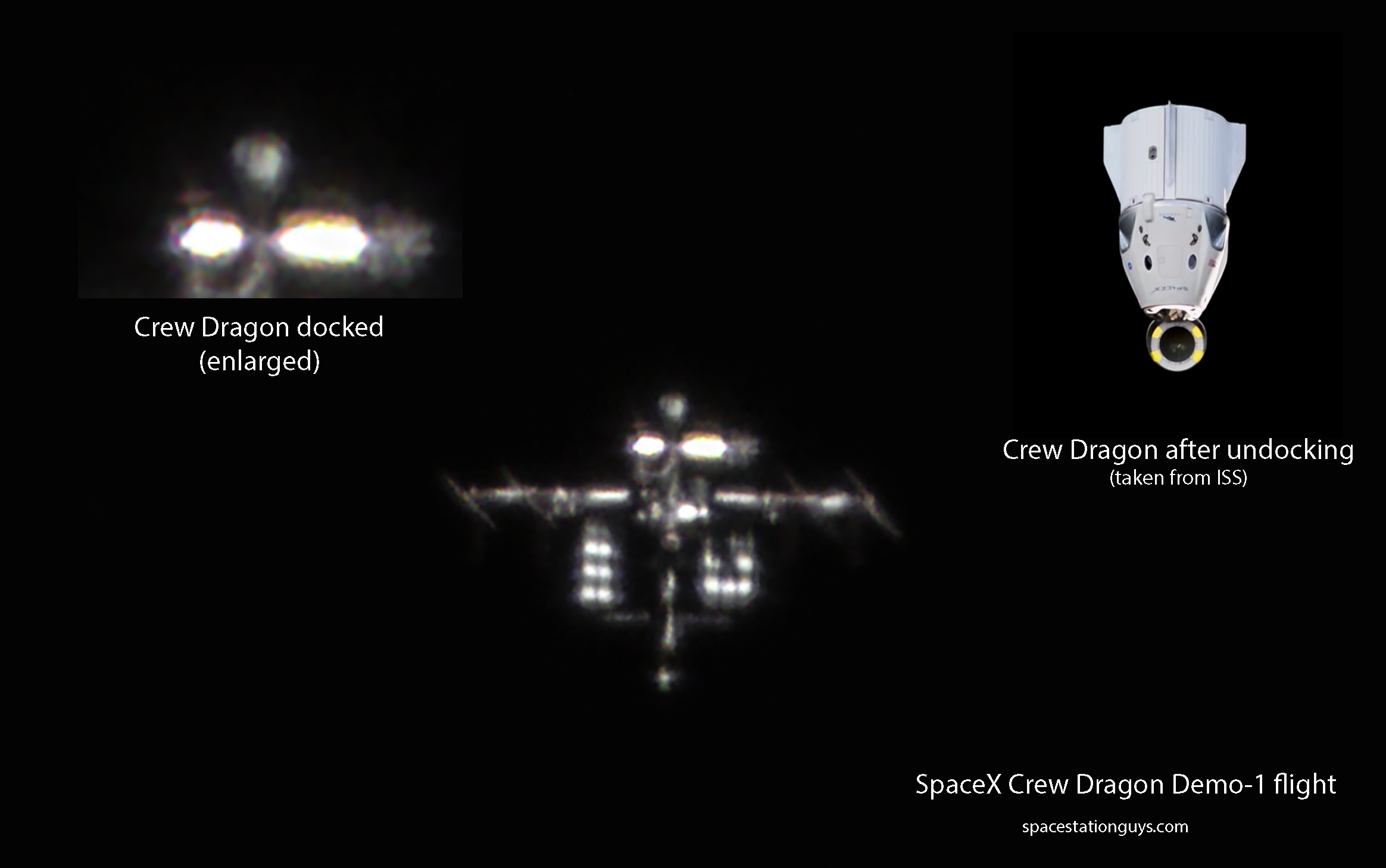
SpaceX Crew Dragon arrives to the Space Station for the first time – Credit: Szabolcs Nagy
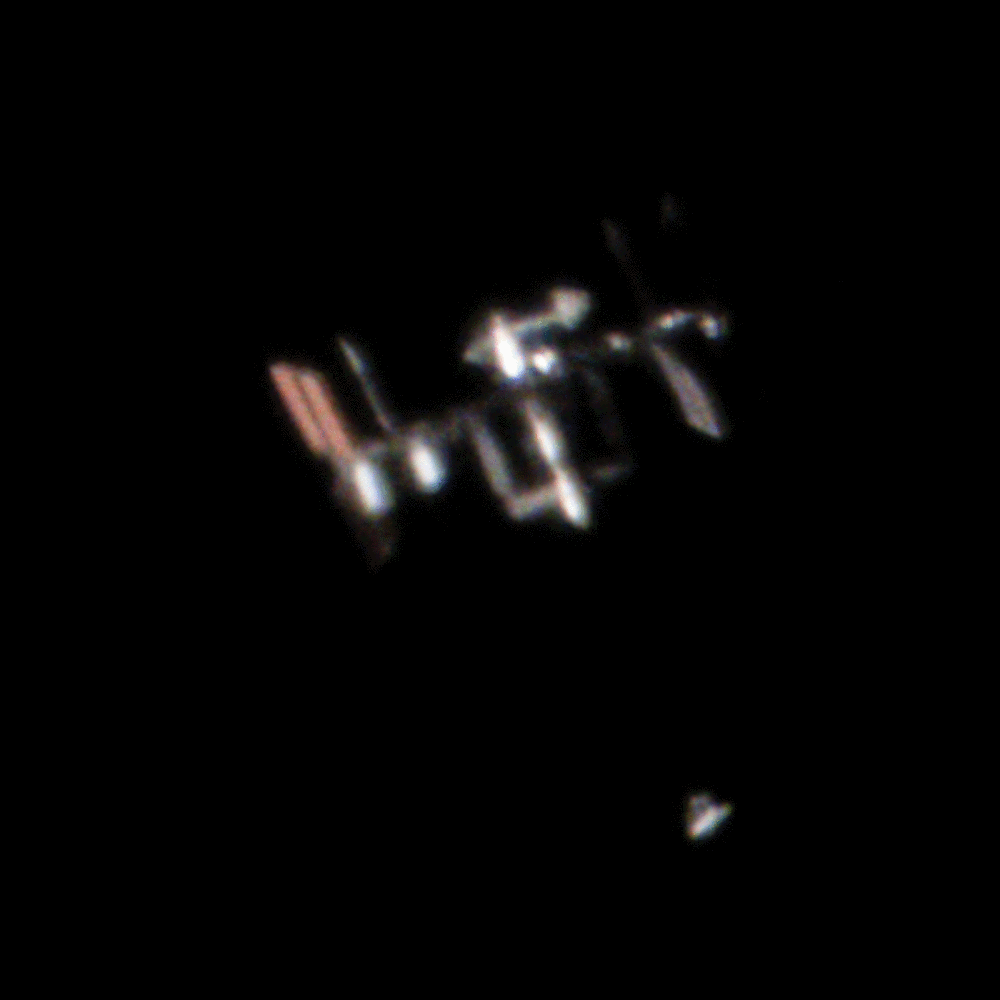
Soyuz MS-13 approaching to Zvezda module aft docking port- Credit: Szabolcs Nagy

Cygnus, Progress, HTV and Dragon cargo spacecrafts – Credit: Szabolcs Nagy
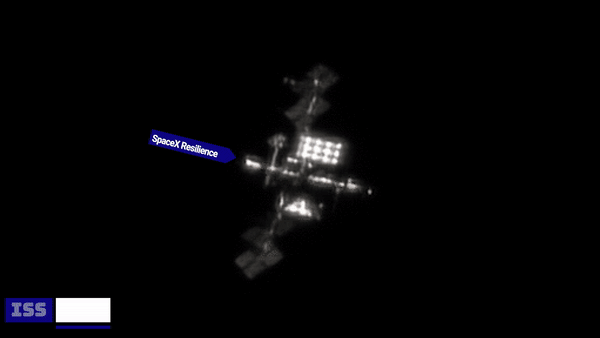
Animation from AI enhanced ground based photos taken with 10″ telescope – Credit: Szabolcs Nagy
It is very easy to observe the Space Station by naked eye! Using an application like ISS Detector will tell when the next flyby can be expected. It is amazing that the Station has been constantly habited by humans since 2000. You will see the ISS as a ‘bright star’ silently crossing the sky, it is worth remembering there are people up there doing incredible scientific work for the benefit of all mankind.
They are my superheros!
Szabolcs Nagy


